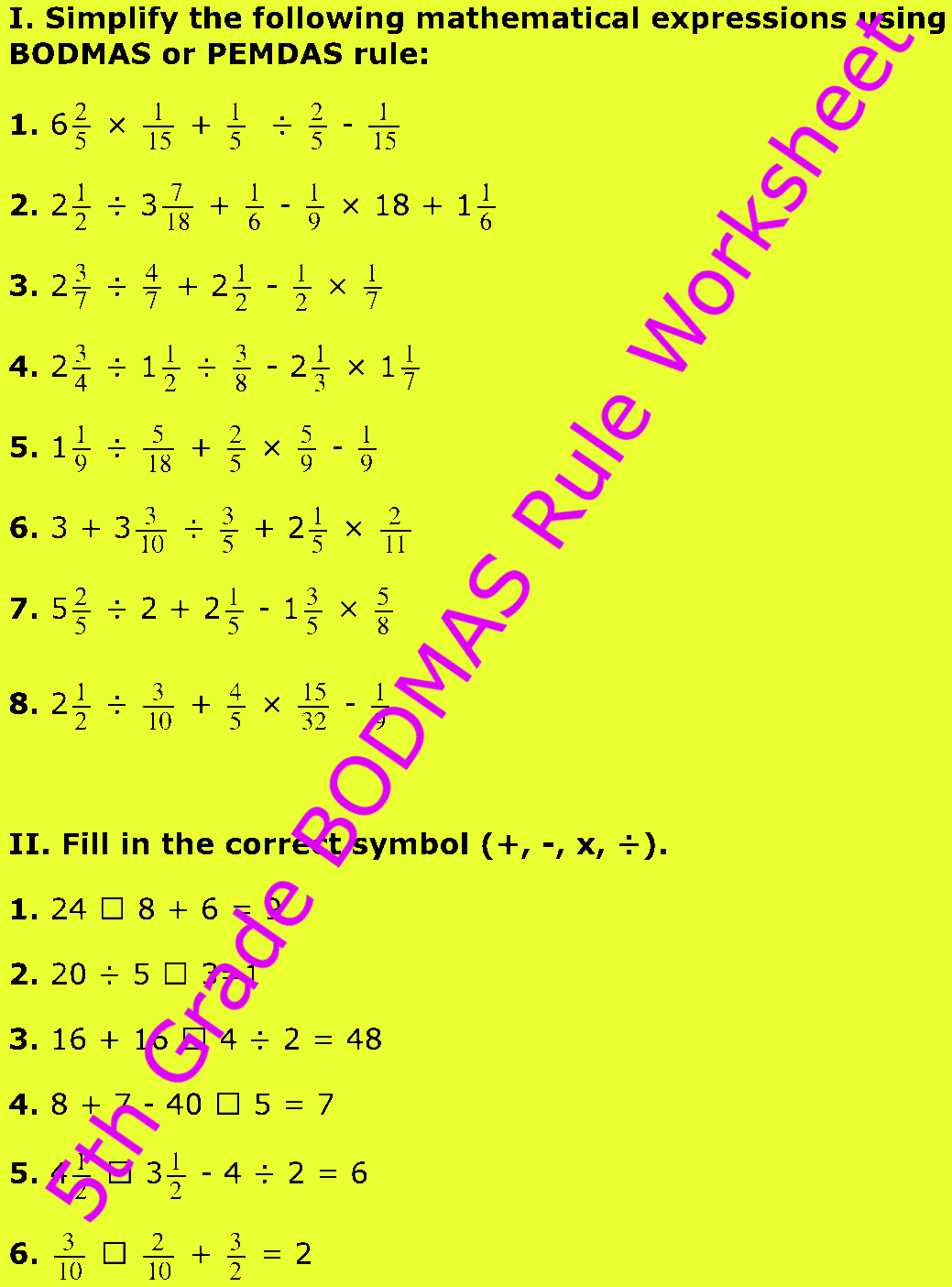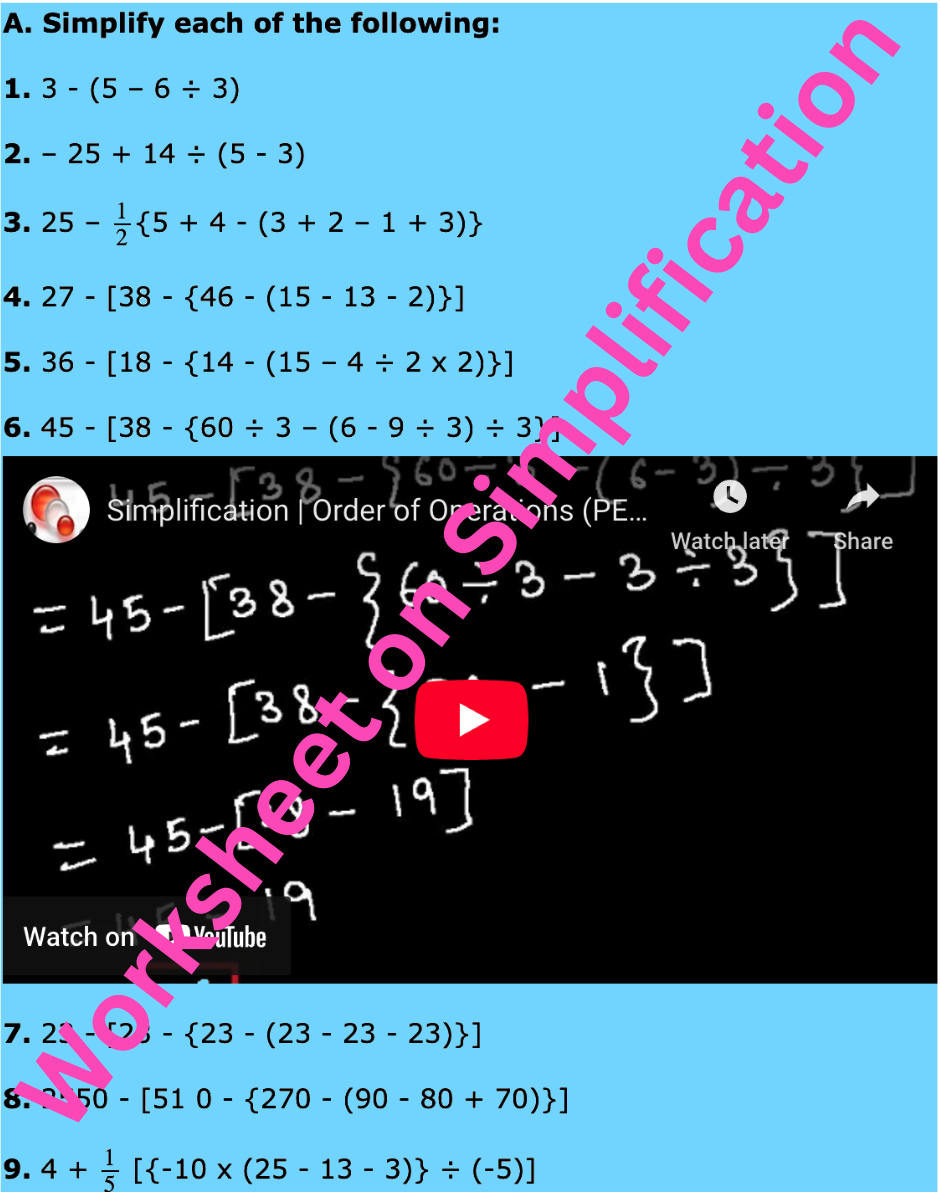Dividing Integers
Dividing integers is the fourth operations on integers, among the four fundamental operations on integers and it is the process of finding how often one give number (called divisor) is contained in another given number (called dividend).
The number expressing the times the divisor is contained in the dividend is called the quotient.
The sign or symbol of division is ‘÷’ and it is read as divided by.
Thus, 32 ÷ 8 is 32 divided by 8.
Note: 32 ÷ 8 = 32/8 = 4; 45 ÷ 3 = 45/3 = 15, 91 ÷ 13 = 91/13 = 7 and so on.
63 ÷ 9 = 63/9 = 7 indicates that in 63, 9 is contained 7 times.
Therefore, 9 is divisor, 63 is dividend and 7 is quotient.
Similarly, 125 ÷ 5 = 125/5 = 25 indicates that in 125, 5 is contained 25 times.
Therefore, 5 is divisor, 125 is dividend and 25 is quotient.
The rules for division are the same as the rules for
multiplication i.e.,
1. If both the integers have like signs (both positive or both negative), the sign of division (quotient) is always positive.
For example:
(i) (+8)/(+4) = +2
(ii) (-9)/(-3) = +3
(iii) (+84)/(+4) = +21
(iv) (-49)/(-7) = +7 and so on.
2. If both integers have unlike signs, the division (quotient) is always negative.
For example:
(i) (+6)/(-3) = (-2)
(ii) (-8)/(+4) = -2
(iii) (-22)/(+11) = +2
(iv) (+32)/(-8) = - 4 and so on.
Note: (-52)/4 = 52/(-4) = -(52/4) = -13
72/(-6) = - (72)/6 = (-72)/6 = -12 and so on.
Solved example on dividing integers:
Divide the following integers:
(i) 96 by 12
= 96/12 = 8
(ii) 96 by -12
= 96/(-12) = -8
(iii) -96 by -12
= (-96)/(-12) = 8
(iv) -96 by 12
= (-96)/12 = -8
(v) 98 by 0
= not-defined
(vi) 98 by 0
= 0
Note:
|
Dividend (+) (+) (-) (-) |
÷ ÷ ÷ ÷ |
Divisor (+) (-) (+) (-) |
= = = = |
Quotient (+) (-) (-) (+) |
Numbers Page
6th Grade Page
From Dividing Integers to HOME PAGE
Didn't find what you were looking for? Or want to know more information about Math Only Math. Use this Google Search to find what you need.
Recent Articles
-
Counting Numbers from 1 to 50 | Match the Number | Missing Numbers
Apr 04, 25 03:46 PM
In counting numbers from 1 to 50, recognize the numbers, count and then join the numbers in the correct number order. Here we mainly need eye-hand coordination to draw the picture and maintain the num -
Counting Eleven to Twenty with Numbers and Words |Numbers from 11 - 20
Apr 04, 25 03:21 PM
Counting eleven to twenty with numbers and words are explained below. One ten and one more is eleven. Eleven comes after ten. One ten and two more is twelve. Twelve comes after eleven. -
5th Grade BODMAS Rule Worksheet | PEMDAS | Order of operations|Answers
Apr 03, 25 03:11 PM
In 5th Grade BODMAS Rule Worksheet you will get different types of problems on mathematical expressions involving different operations, mathematical expression with 'brackets' and 'of' and simplifying… -
Worksheet on Simplification | Simplify Expressions | BODMAS Questions
Apr 03, 25 02:58 PM
In worksheet on simplification, the questions are based in order to simplify expressions involving more than one bracket by using the steps of removal of brackets. This exercise sheet -
Divisible by 2 Video |Test of Divisibility by 2 Trick| Rules| Examples
Apr 03, 25 10:25 AM
A number is divisible by 2 if the digit at unit place is either 0 or multiple of 2. So a number is divisible by 2 if digit at its units place is 0, 2, 4, 6 or 8.





New! Comments
Have your say about what you just read! Leave me a comment in the box below. Ask a Question or Answer a Question.